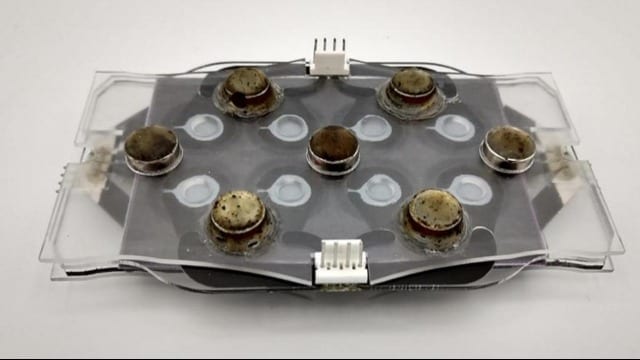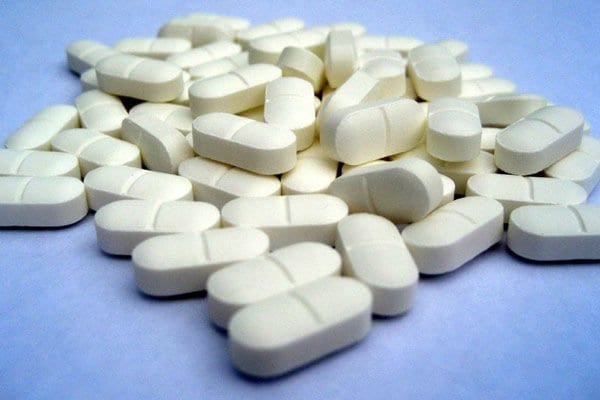
Since prehistoric times, clays have been used by people for medicinal purposes. Whether by eating it, soaking in a mud bath, or using it to stop bleeding from wounds, clay has long been part of keeping humans healthy. Certain clays have also been found with germ-killing abilities, but how these work has remained unclear.
A new discovery by Arizona State University scientists shows exactly how two specific metallic elements in the right kinds of clay can kill troublesome bacteria that infect humans and animals.
“We think of this mechanism like the Trojan horse attack in ancient Greece,” said Lynda Williams, a clay-mineral scientist at ASU’s School of Earth and Space Exploration (SESE). “Two elements in the clay work in tandem to kill bacteria.”
She explained, “One metallic element — chemically reduced iron, which in small amounts is required by a bacterial cell for nutrition — tricks the cell into opening its wall. Then another element — aluminum — props the cell wall open, allowing a flood of iron to enter the cell. This overabundance of iron then poisons the cell, killing it as the reduced iron becomes oxidized.”
“It’s like putting a nail in the coffin of the dead bacteria,” said Keith Morrison, Williams’ former doctoral student, who is now at Lawrence Livermore National Laboratory.
Morrison is the lead author of the paper reporting the discovery, which was published Jan. 8 in Nature Scientific Reports. Rajeev Misra, a microbiology professor in ASU’s School of Life Sciences (SOLS) is the third author of the paper. Morrison’s work in Misra’s laboratory gave insights into the mechanism by which clays work to kill bacteria. Both SESE and SOLS are units in the university’s College of Liberal Arts and Sciences.
A critical part of the investigation involved the use of ASU’s NanoSIMS, which is part of the National Science Foundation-supported Secondary Ion Mass Spectrometry Facility. The study also benefited from a variety of electron microscopes and X-ray equipment in the LeRoy Eyring Center for Solid State Science.
French green clay leads to Oregon blue clay
A chance discovery of a medicinal clay from Europe caught Williams’ attention and put her on the track. A French philanthropist with clinical experience in Africa told her about a particular green-hued clay found near the philanthropist’s childhood home in France. The philanthropist, Line Brunet de Courssou, had taken samples of the clay to Africa, where she documented its cure for Buruli ulcer, a flesh-eating skin disease, in patients in the African country of Cote d’Ivoire (Ivory Coast).
Williams attempted to locate the site of the green clay deposit, which was in the French Massif Central region. When the search proved unsuccessful, she began systematically testing clays sold online as “healing clays.”
After testing dozens of samples, Williams and her team identified a blue-colored clay from the Oregon Cascades that proved to be highly antibacterial. The research reported in the paper shows that it works against a broad spectrum of human pathogens, including antibiotic-resistant strains such as methicillin-resistant Staphylococcus aureus (MRSA).
The colors of the clays reflect their origins, Williams said. The greens and blues of antibacterial clays come from having a high content of chemically reduced iron (Fe2+), as opposed to oxidized iron (Fe3+), which gives the familiar red color of rust (Fe-oxide), often associated with many clays. Reduced clays are common in many parts of the world, typically forming in volcanic ash layers as rocks become altered by water that is oxygen-deprived and hydrogen-rich.
“The novelty of this research is two-fold: identifying the natural environment of the formation of clays toxic to bacteria, and how the chemistry of these clays attacks and destroys the bacteria,” said Enriqueta Barrera, a program director in the National Science Foundation’s Division of Earth Sciences, which funded the research.
Because blue and green clays are found abundantly in nature, Williams said, this discovery of how their antibacterial action works should lead to alternative ways of treating infections and diseases that are persistent and hard to heal with antibiotics.
Williams said, “Discovery of how natural clays kill human pathogens may lead to a new economic use of such clays and also to new drug designs.”
Read more: ASU scientists discover how blue and green clays kill bacteria
The Latest on: Clays kill bacteria
[google_news title=”” keyword=”Clays kill bacteria” num_posts=”10″ blurb_length=”0″ show_thumb=”left”]
via Google News
The Latest on: Clays kill bacteria
- World First: Orangutan Observed Using Medicinal Plant to Treat Woundon May 14, 2024 at 4:00 am
Researchers have long documented human-like behaviors in animals. For instance, dolphins are known to play games with each other, and elephants mourn and bury their diseased brethren. But aside from ...
- Crafting a better future for allon May 9, 2024 at 2:23 am
When clay meets fire, it becomes denser, and when it is fired to more than 1000 degrees, it becomes a space where no bacteria can live. By picking clay for tableware, people gave themselves more ...
- The 2024 Men's Health Grooming Awardson May 7, 2024 at 6:00 am
Small in price, mightyon skin—a plant-based cleanser with essential oils (olive, jojoba, argan, coconut, and sunflower). Pick this up for the hyaluronic acid, Vitamin B and amino acid-packed formula ...
- Riley Keough, Rita Ora, and I Had the Same Met Gala Facialon May 6, 2024 at 6:59 am
zinc, and cayolin clay. “I have a lot of things in there,” she says ... “It’s oxygen, with a hyaluronic acid mist and blue light, which helps to kill bacteria,” Darden explains. The oxygen makes skin ...
- Drugs that aren’t antibiotics can also kill bacteria − new method pinpoints howon April 17, 2024 at 7:00 am
Studies have found that nearly a quarter of drugs that aren’t normally prescribed as antibiotics, such as medications used to treat cancer, diabetes and depression, can kill bacteria at doses ...
- Drugs that aren't antibiotics can also kill bacteria. A new method pinpoints howon April 15, 2024 at 5:00 pm
Studies have found that nearly a quarter of drugs that aren't normally prescribed as antibiotics, such as medications used to treat cancer, diabetes and depression, can kill bacteria at doses ...
- Uranium-immobilizing bacteria in clay rockon April 15, 2024 at 5:00 pm
In Germany, rocks that are suitable for the permanently safe storage of highly radioactive waste in a repository – so-called host rocks – are certain clay rock formations in addition to rock ...
- 5 Benefits of Using Bentonite Clay for Teeth and Oral Hygieneon December 20, 2023 at 7:27 pm
Bentonite clay raises the pH of the mouth, which neutralizes the acids present in the mouth after food breakdown, as well as kills harmful bacteria. This allows for an increase the overall oral ...
- Best LED face masks 2024: luxury beauty tech for better looking skinon August 28, 2023 at 12:05 am
I’m not talking about the slimy clay-like face masks that you ... penetrate the skin’s surface to target and kill the breakout-feeding acne bacteria, while the red light penetrates the dermis ...
- Mummies 101on July 13, 2018 at 1:00 am
After the organs were removed, the body was rinsed with wine, which helped kill any remaining bacteria ... and coated the exterior of the body with clay on which they painted or sculpted.
via Bing News











